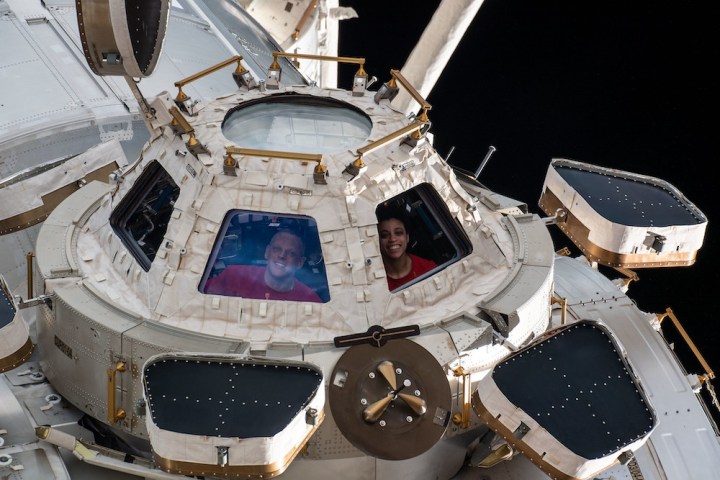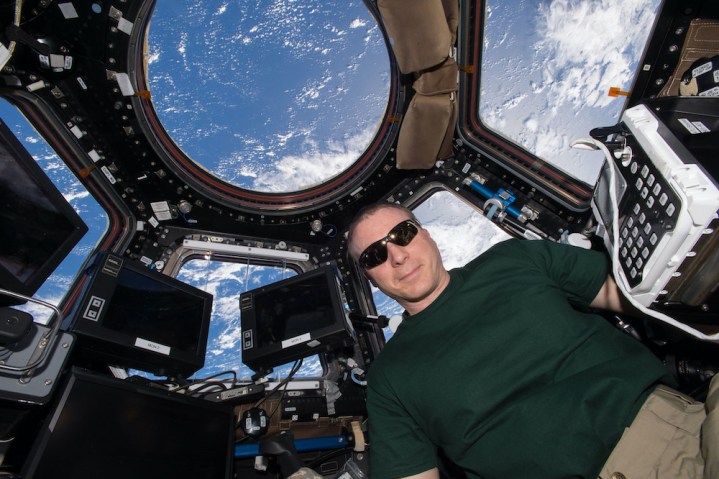The International Space Station’s Cupola module is popular among astronauts as its seven windows — six around the side and one on the top — offer the best views of Earth and beyond. It’s why NASA calls it “the window to the world.”
While us folks down here on terra firma are often treated to some of the stunning Earth imagery that astronauts snap on their cameras while gazing out from the Cupola, it’s rare to see a photograph that’s looking back toward the module.
But in recent days, NASA shared such a shot, with the delightful image (below) showing space station crew members Bob Hines and Jessica Watkins peering out from the Cupola.
Judging by the angle and comparing it with another image captured last year, it seems that the picture was taken from inside Russia’s Nauka module, which arrived at the station in July 2021.

Note the presence of the external shutters that protect the Cupola’s windows from any tiny meteoroids and space debris that come its way. The shutters, which maneuver into place when the Cupola isn’t in use, also stop solar radiation from heating up the Cupola while at the same time preventing internal heat from escaping. You can see the shutters in action in the video below.
To see the Cupola from the inside, check out this image from 2015 showing retired NASA astronaut Terry Virts, who here is wearing a pair of spectacles to protect his eyes from the sun’s rays.

Hines and Watkins have been on the space station since April and are due to fly home aboard a SpaceX Crew Dragon spacecraft some time in October. During their time aboard the orbiting outpost, the pair have been working with other crew members on a slew of science experiments, and also assisting with spacewalks and managing the arrival and departure of various spacecraft. Here the Cupola also plays an important role as it contains the controller equipment for the station’s robotic arm, Canadarm2, which is sometimes needed to catch visiting spacecraft to help them safely dock.
Editors' Recommendations
- China’s space station was hit by space junk
- See what the solar eclipse looked like from space
- Around-the-clock 4K Earth imagery to be streamed from ISS
- Amazing Earth photos shared by outgoing ISS astronaut
- How to watch Crew-8 arrive at the space station tonight


